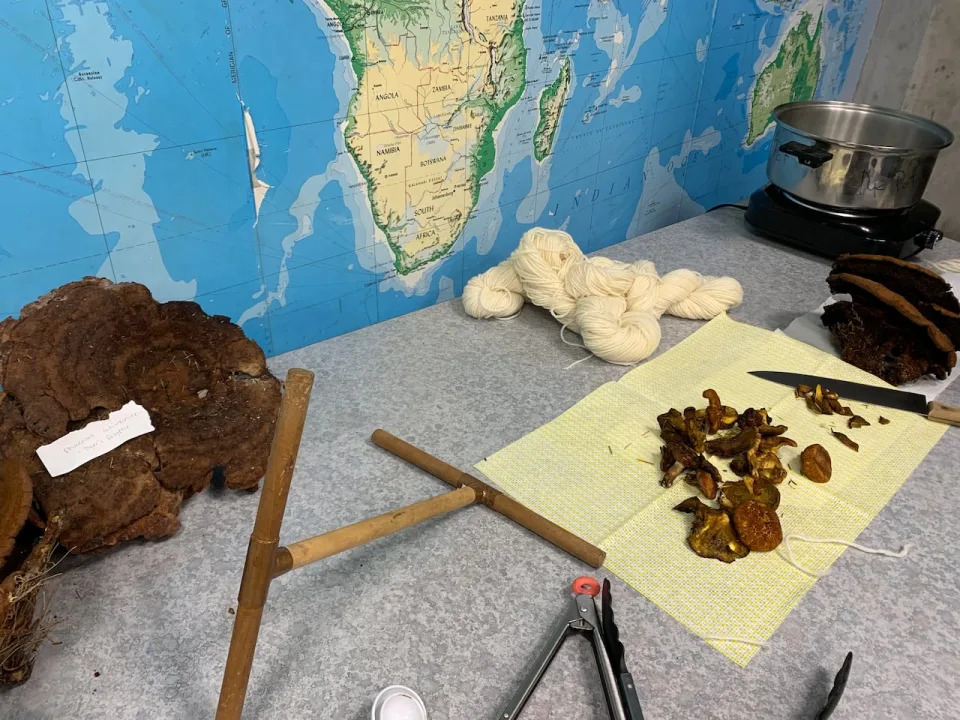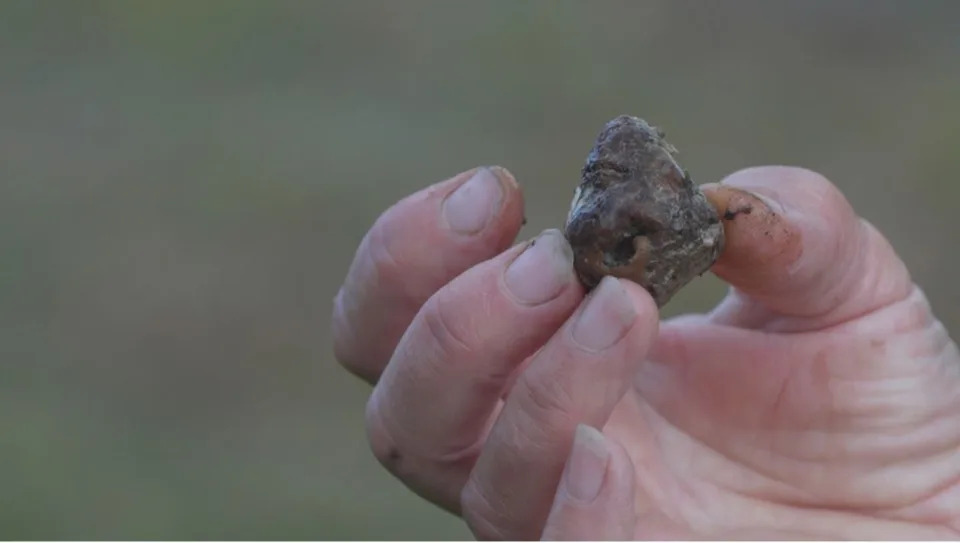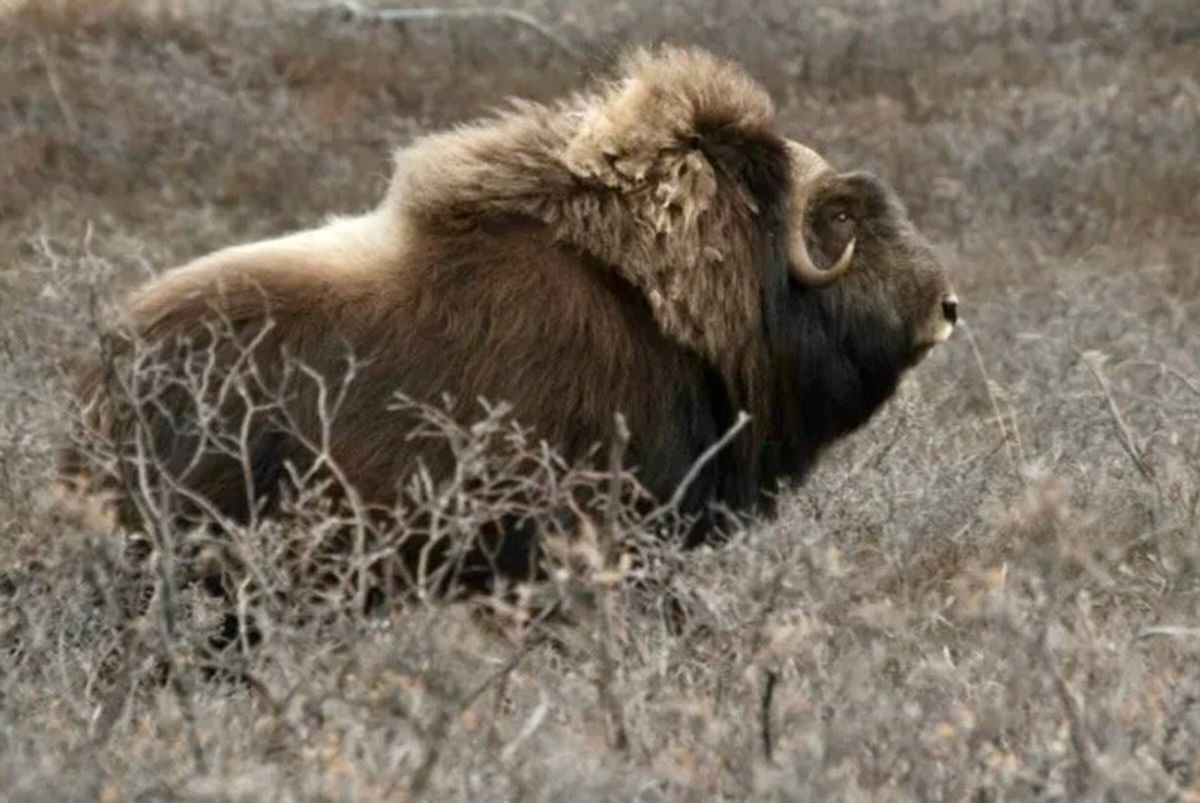
Portrait of the young de Sade by Charles Amédée Philippe van Loo, 1760.
More than two centuries after his death the works of the Marquis de Sade can still shock. This is itself somewhat surprising since our culture is saturated by sex and violence and the crimes of Jeffrey Epstein are still making the news. While Sade lived he was a man reviled for both his crimes and his writings. Without question some of his crimes merited revulsion and imprisonment then and now. I say some of his crimes because he was also imprisoned for his opinions and some of his writings were crimes both under the monarchy and the republic. Despite his dubious reputation, he was an influence on writers like Flaubert and Baudelaire, on artists like Delacroix and Picasso. More than that Sade is a bridge between the Enlightenment and many of the philosophers that follow, Nietzsche, Adorno, Sartre among others. His critique of the Enlightenment notion of freedom anticipates Marx’s critique of that notion. In doing so Sade’s works anticipate and explain the assaults on freedom taking place now with the new rise of nationalism here and abroad. To understand why his writings still speak to us some account of his life is needed first.
The year 1777 divides Sade’s life. Before that year he spent most of his energy in pursuit of gambling and sex. After that year he spent most of his life in prison where he devoted most of his energy to writing. Prison made a writer of Sade. And that experience shaped his thoughts on the subject that makes his writings still relevant, the meaning of freedom.
Sade’s life before prison
Sade’s origin and upbringing explain much about the originality of his writing. He was born to a family of the nobility in 1741 in Paris. His family despite their nobility were not wealthy. His father was something of a ne’er-do-well. He scorned middle-class professions like banking as crass and devoted himself to more worthy pursuits like social climbing. His goal was to gain a position in the royal court of Louis XV. He only succeeded in making a pest of himself. Perhaps for that reason the king gave him a position in the diplomatic corps which would keep him out of the country much of the time—which also limited his time with his son.
Sade’s mother was also absent most of his childhood. She was a lady-in-waiting to the court—which is not as lofty or exclusive as it sounds. By the eighteenth century there were typically twenty to forty of such women attending the queen, writing letters, arranging court ceremonies and gossiping. Four days after giving birth to Sade she went to a convent to recover and her infant son’s care was left to servants.
It should be said that Sade’s upbringing was not unusual for children of the nobility. Children were mostly regarded by the upper classes as a nuisance until they could be married off—ideally to financial and social benefit. Sade’s temperament as a result had a cold and calculating side to it which was manifest in his merciless treatment of his victims, but which also produced a mind that could examine ideas and issues with a cold clarity.
When he was four his father was sent on a diplomatic mission to Berlin in 1744 and his mother packed him off to relatives in Avignon. Among his caregivers there was his uncle Abbé de Sade who was what would be termed now a predator. Sade himself was not one of his victims since his taste was for young girls. In any case Sade’s low esteem for family bonds and the clergy no doubt resulted partly from his experiences in Avignon. In 1750 he was sent to a Jesuit school in Paris where surprisingly enough he was taken under the wing of a kindly priest. A Jesuit education then as now was a good education but it involved some violence. The chief form of discipline was beating student birch rods. A birch ‘rod’—it was not really a rod but a bundle of birch branches. The punishment was administered by the Jesuits on Sade’s bare ass in front of the other students. Whipping someone and being whipped was a fixture of his sexual activities the rest of his life. And this is also the most common scenes in Sade’s libertine novels.
It may be noted that this practice was also part of Joyce’s education though at the secondary Jesuit school in Dublin, Belvedere College, though in his time they used a cane. Gradually the Jesuits adopted more humane forms of this punishment. When I attended a Jesuit high school in the late sixties the vice-principle used a leather strop on me. But I didn’t have to pull my pants down and I was taken out in the hallway. This following the motto of the Jesuits Ad Majorem Dei Gloriam—For the greater glory of God. [I may cut this paragraph – what do you think?]
Four years later Sade entered a military school and in 1759 he entered the military. It was while he was in the military that Sade began to get a reputation for his sexual activities—which it seems must have been already extreme since they caused a stir which angered his neglectful father. Probably because they distracted him from his own licentious activities.
Sade was discharged from the military in 1763 when he was twenty-two. Freed from the constraints of military he had more time for gambling and women. He ran up debts and fought for the favors of women with other wastrels of the nobility like himself. One instance led to a duel. At that point his father decided that marriage was the answer.
The usual course of matrimonial matters for the nobility was for the father to arrange a marriage for his child that was financially suitable for the family—the child’s feelings for the prospective spouse were secondary at best. Sade’s father however was consumed by his own affairs and he simply wanted to be rid of his troublesome son. So rather than exploring his son’s ‘market value’ he waited until someone approached him and he accepted the offer no questions asked. The bride-to-be Renée-Pélagie de Montreuil was from a family of newly-minted nobility. Her father was a wealthy middle-class businessman who acquired his title by purchasing land from a noble family. Everything in France at that time was for sale. His father’s timing could not have been worse. His son had of all things fallen in love.
Sade had struck up an affair a young woman named Laure de Lauris whose family were real nobility and he fell in love with her. That he was truly in love is seen in the fact that his feelings for her were undiminished even after she gave him a case of syphilis. His family’s modest means made the marriage of Sade and Laure unlikely, but her aversion to him after their intimacies made it out of the question. She soon found another lover and begged her father not to marry her to Sade. Sade pleaded with her, professed his undying love for her—and also reviled her. All to no avail. Laure told him she would rather be a nun than his wife.
In the end Sade submitted to the marriage to Renée de Montreuil. Against all odds she became a helpmate to her unruly husband. Unfortunately the marriage also saddled Sade with mean-spirited and conniving mother-in-law. The stuff of comedies but the only comedy found in the rest of Sade’s life was of a rather dark sort.
Five months after they were married Sade was thrown in jail for two weeks. He had taken a Paris prostitute named Jeanne Testard home. He took her to a room which had a variety of whips and ropes on display. It also had crucifixes, engravings of Christ and the Virgin Mary as well as a number of obscene drawings. He told her to whip him first and then he would whip her. She refused and he stomped on a crucifix and demanded that she trample on its pieces too. Fearing for her life, she did so while repeating blasphemies that Sade ordered her to say.
Previous to this episode Sade had already had a few scrapes with the police—they had warned some of the brothel madams not to send their girls home with him. So it didn’t take the police long to discover that Testard’s tormenter was Sade. It should be mentioned that it wasn’t Sade’s physical abuse of the girl that most disturbed the police, but rather the impieties and blasphemies involved. Sade was jailed for two weeks. While in jail he wrote a very contrite letter and begged to be allowed to see a priest in order to make his confession. It was all pure hypocrisy and if the authorities hoped Sade would learn anything from the episode they were to be disappointed. All he learned was that he had to take more precautions in order to pursue his pleasures. Sade’s next scrape with the law was more serious.
On Easter Sunday in 1768 Sade went out in search of a woman—expressly to desecrate the holy day it would seem. An unemployed weaver Rose Keller who had come from mass asked him for alms. He offered her some money if she would come home with him. When she said that she was not that sort of woman he told her he wanted her only to do some housecleaning. When they got to his house he ripped her clothes off and threatened to kill her if she didn’t comply to his demands. He tied her on a bed and whipped her until she bled. Then he made small incisions in her and dripped hot wax into them. When she sobbed and said she feared she would die before performing all of her Easter duties he told her he would hear her confession. There followed more whipping while Sade masturbated. After his orgasm he left her locked in the room. Keller escaped by climbing out a window and ran to the police.
By this time Sade had become one of the chief targets of the lieutenant-general of the Paris police, Antoine-Raymond de Sartine, and his subordinate Louis Marais, head of the Paris vice squad. Marais wrote detailed accounts of the escapades of the nobility and the king read them all. His chief interest in them was to use them to keep the nobility in line. Their crimes and assaults were it seems a secondary matter. Sade’s family and his in-laws intervened but he was sentenced to six months in prison.
Again Sade’s resentment towards the justice system and the monarchy simply became more intense. He felt he was being singled out by the police and courts and in a way he was. What he had done to Rose Keller was far from unusual for men of the nobility and most of them usually went unpunished. The Comte de Charolais, the brother of the king went unpunished for worse things than Sade ever did. The police reports then, as I said, were detailed. In one instance the Comte invited a woman home for dinner, got her drunk, stripped her clothes off and inserted a firecracker into her vagina and said before he lit it, “The little lapdog has to eat too.” [note1 Sade j’ecris ton nom Liberté, Jean A. Chérasse and G. Guicheney. Pygmalion Press 1976. As quoted in Hayman, p. 51] Sade was being punished not so much for his activities as for the fact that accounts of them were published in the press.
After the Rose Keller affair Sade was exiled to Lacoste in the Provence where his family owned a chateau. There he staged elaborate entertainments for his neighbors which sometimes involved plays he had written. In addition to these there were also more orgies. His sessions with Parisian prostitutes gave way to elaborate orgies involving multiple women and his valet Latour who served as his pimp. It culminated in June of 1772 when he made the mistake of taking his act to nearby Marseilles. As one of his biographers Ronald Hayman says Sade was “like a gambler raising the stakes.” [note 2: Hayman, p. 84]
Sade and his valet Latour rounded up four prostitutes in Marseilles and took them to a flat he had rented for a few days. A single scene gives an idea of what happened. Having given an aphrodisiac to four girls ranging in age from eighteen to twenty-three, Sade whipped one of them, then buggered her while Latour buggered him. The next night Sade gave the same drug to a girl named Marguerite before he had sex with her. Then he and Latour returned to his chateau.
Marguerite was ill after Sade departed a doctor saw her. The police were brought in and all five of the girls gave statements and orders were given for the arrest of Sade and Latour. When they heard of the proceedings Sade and Latour fled to Italy. In time however Sade was extradited back to France.
For the next five years Sade’s life reads something like a novel by Dumas. Imprisonment and escapes, while his mother-in-law plots to have him jailed so as to put an end to the scandals. It ended in 1777 when Sade managed to get back to Lacoste. There the irate father of one of the girls in the Marseilles escapade tried to kill Sade. He was arrested again and put in a prison in Vincennes near Paris. Sade spent twenty-seven of the last thirty-seven years of his life in one prison after another.
This account of Sade’s sexual exploits should be balanced by other part of his life that reveal another side of his character. While his libertines who are married encourage their wives to have sex with others, Sade himself fretted that his wife might be unfaithful while he was in prison. Which seems rather quaint. Other things show a sympathetic side to Sade’s character. In a letter to his mother-in-law written in prison he wrote, “I am a libertine, but I am neither a criminal nor a murderer.” [Hayman, p. 116] He goes on to tell of having supported three impoverished families for five years, risked his life to save a child from being killed by a runaway cart. And he was capable of loyalty and generosity. In 1790 when he was released from the prison in Charenton he met a thirty-year-old former actress Marie-Constance Renelle who had a six-year-old son and had been abandoned by her husband. She would become his lover and when that part of their relationship waned he valued her as his closest friend for the rest of his life. When he died he left his estate—which by then had grown due to the sales of his books—to her.
Sade’s abuse of women—and the Jesuits’ abuse of him—may present instructive parallels with events now and in the recent past. Jeffrey Epstein is the most obvious case and the numerous men ‘outed’ by the MeToo phenomenon could be mentioned too. But his real relevance now rests not on those parallels, but on the works he wrote in the long years he spent in prison, works which all meditate on the meaning of freedom.
Sade’s writings
Sade’s fictional works are usually divided into two groups, his so-called libertine works and his more conventional works. The distinction is based more on form than content. The libertine novels are written from the point of view of the libertine characters while the other novels are written from the point of view of the victims of the libertines. That said, the same ideas and themes are found in both. In the libertine novels the heroes, in between their sexual activities, put forward the ideas that justify their behavior while in the more conventional novels the victims refute those ideas. The general view is that the views of the libertines reflect those of Sade too. But I think this is a mistake. I think Sade took seriously the counterarguments put forth by the libertines’ victims in the other novels. Even as a libertine novel like Philosophy in the Bedroom consists of dialogues along the Platonic model, I think the libertine novels and the conventional novels are meant to form a dialogue.
The most famous libertine works are The 120 Days of Sodom and Philosophy in the Bedroom. Of his more conventional novels Justine is probably the most well-known example, though Aline & Valcour merits attention too.
Justine and Aline & Valcour are works that place Sade firmly in the context of eighteenth- century European literature. One of the central issues of the Enlightenment was the education of women. Samuel Richardson’s novel Pamela or Virtue Rewarded is an example. Sade’s novel Justine or the Misfortunes of Virtue is a reply to that. Much of the modern European novels drew their plots from the ancient Greek Romances of the Hellenistic era. fall in love and then are separated and their love is tested are by various misfortunes: evil princes, bandits, pirates, kidnapping, sea storms and so on. But their love and virtue triumph over all and they are reunited at the end. The Aethiopica by Heliodorus written in the third century A.D. is a good example.
The plot of Sade’s novel Aline & Valcour makes use of all the same elements. The two young lovers Aline and Valcour become separated and search for each other in many foreign lands while subjected to various misfortunes. Here too in what I’ve called his conventional novels, Sade ignores conventions and departs from the model of the Greek Romance and most of the romance novels of modern European literature. There is no happy ending for the two lovers. Aline commits suicide in despair of ever being reunited with Valcour.
Two of the places visited in the novel can be seen as critiques of the social order of France on the eve of the revolution. The African island of Butua is a monarchy. The cynical view of the libertines in The 120 Days of Sodom or Philosophy in the Bedroom is expounded by one of the king’s favorites, Portuguese character Sarmiento who argues that injustice and violence are essential for a monarchy and they only follow the laws of nature in this. Cannibalism in Butua is common and is an expression of this. By contrast the island of Tamoë is a republic in which all citizens are equal. The king Zamé calls himself “the state’s first citizen.” He says of his time in Europe that he saw much vice and little virtue. “Everywhere I could divide men into two classes, to be pitied equally. In one the rich man was slave to his pleasures; in the other, the poor man was a victim of fate…” [Vol. 2 p. 278]
While these same issues are discussed in Sade’s libertine works, Aline and Valcour scorn tyranny but hold traditional views on love, fidelity and marriage and these views Sade does not present as worthy of scorn as they are in his libertine works. As I said, the novel can be seen as a critique of the libertine novels like The 120 Days of Sodom and Philosophy in the Bedroom. Sade said as much in a letter to his wife: “I do not want to win sympathy for vice. It is not my object…to make women love the men who deceive them…Those of my heroes who follow the path of vice I made so frightful that they will inspire neither pity nor love.” [Hayman p. 154]. Here we might recall the earlier letter to his mother-in-law in which he defended himself by citing his charitable and selfless acts. Those things and his conventional fictions make it clear that Sade did not share all the ideas espoused by his libertines. While libertines like Dolmancé defend incest, Sade’s novel Eugénie Franval was originally subtitled “The Misfortunes of Incest” and in it the incestuous love affair between Eugénie and her father ends with Eugénie dying of remorse after she poisons her mother and her father commits suicide. This is what I mean when I spoke of novels like Aline & Valcour and Eugénie Franval forming a dialogue with libertine novels The 120 Days of Sodom and Philosophy in the Bedroom, Any account of Sade’s ideas must take into account the former works as well as the latter.
It is not only the varieties of sex of course that make novels like Philosophy in the Bedroom libertine but also the arguments expounded by his libertine characters when they rest from their exertions. There are probably forms of sex not found in Sade’s novels but I do not know of them nor have I looked for them. Some of the forms of sex are common now, some not so common I think. The most common form of sex is anal sex—or sodomy as it was then called. There is also group sex, bondage, sex with animals, pedophilia, incest and rape—all of these things performed by various combinations of males and females. Many of these acts are accompanied by acts besides whipping that probably most people now would find even more repulsive. Coprophagy comes to mind. The usual climax of all of these activities was murder. In The 120 Days of Sodom all the victims are murdered at the end and all in different ways that the monstrous libertines spend some time devising. Philosophy in the Bedroom is exceptional in this regard as there is no murder at the end.
Yet all of these horrible excesses are not meant to titillate depraved imaginations. As I say in the interludes between their sexual activities the libertines discuss their sexual desires and justify them against religion, middle-class morality and the law. Their arguments are a frontal assault on the ideas associated with the Enlightenment. Sade in these passages seems to be composing a sly reply to Rousseau’s argument that man was by nature good until he was corrupted by civilization which inflamed him into a nasty conflict with his fellow citizens. Yes, Sade seems to say but ‘good’ by nature means a Hobbesian creature ‘red in tooth and claw.’ After all, animals kill each other and eat each other. In this Sade takes a certain line of thought in the Enlightenment and carries it to a very disturbing conclusion.
The prevalence of anal sex in Sade’s novels needs some comment. Nowadays is usually taken as a matter of taste. But in Sade it has a special significance. It is not only the most common form of sex between males but also between males and females. Even before the physical pleasure it offers his libertines, they take a psychological pleasure in it as an insult to religion since it precludes procreation which in the view of the Catholic Church and many other religions was and still is the main purpose of sex. In other words, anal sex is for them a form of political protest. Even as people at political protests shout slogans the libertines shout blasphemies while engaged in it. For me at least there is in this something comical about the libertines. Though they profess to imitate animals, a good deal of thinking and talking is necessary for their pleasure.
Philosophy in the Bedroom is the main libertine work discussed here for two reasons. First, it contains Sade’s most succinct explanation of his views on freedom. This occurs in the Fifth Dialogue. The second reason is that I think it is the least tedious of the libertine works. Not only do the orgies grow dreary, but the same arguments are found in one novel after another and within each novel it is usually made many times by different characters. It is a provocative argument but once is enough. If Sade had only written Philosophy in the Bedroom and Justine he would still be among the most important European writers since the Enlightenment. But then what would he have done with his spare time in prison?
The main characters in Philosophy in the Bedroom are Dolmancé, Madame de Saint-Ange, her brother Le Chevalier de Mirval and a girl Eugénie. Dolmancé is a 36-old libertine; his friend Saint-Ange is a 26-year-old libertine whose house is the setting of the novel. Eugénie is a fifteen-year-old girl whose views on love, sex and marriage have been shaped by her religious mother. Her libertine father has sent her to Saint-Ange for her reeducation in all these matters.
The novel consists of seven dialogues a dialogue mostly between the three libertines, Dolmancé, his friend Mirval, Mirval’s sister Saint-Ange, her gardener Augustin and Eugénie. The setting for the novel is Saint-Ange’s house.
Dolmancé takes the lead in reeducating Eugénie who is a virgin. He explains to her that traditional morality and religion are absurd obstacles that obstruct the sole purpose of life installed in humans by nature, pleasure, of which the most important form is sex. Saint-Ange and Mirval explain to the girl that they have had sex on numerous occasions because the incest taboo is another absurdity. Mirval deflowers the girl and after that she enthusiastically participates in the libertines’ various sexual acts during which Mirval and his sister Saint-Ange also have sex. At the end of the novel Eugénie’s mother Mistival arrives to rescue her daughter but it is too late. She is beaten, whipped and raped and her daughter joins in these acts—her daughter even wants to murder her. But they settle for something less though probably more disturbing. A servant with syphilis is called in to rape Eugénie’s mother. Afterwards to prevent the infected semen from leaking out Eugénie sews up her mother’s vagina and then Dolmancé sews up her anus too for good measure.
The fifth dialogue contains what is the most famous passage is Sade’s works. Sade signals its importance by setting apart in typeface from the rest of the dialogue and it begins, “Yet another effort, Frenchmen, if you would become republicans.”
What follows is Dolmancé’s argument against the idea of law itself. He asks the question if the people who made the revolution, which began with the goal of liberation by destroying the tyrannical laws of the monarchy which were based on religion, will consider it completed by the creation of new laws. This for Dolmancé will ensure the ruin of the revolution. As he says, “Abandon the notion; for what should we, who have no religion, do with laws?” From this standpoint, incest and murder which are occur in most of Sade’s libertine novels have a special importance.
The prohibition of incest has existed in every human society although with some striking variations—in ancient Persia the marriage of brother and sister was common and considered one of the best unions. French psychoanalyst Jacques Lacan calls the prohibition of incest the “primordial Law” in that it sets human society apart from the animal kingdom, and his work will shape most of the critique here.
For the Sadean libertine the only law is the law of Nature which for Sade is passion. And for Sade passion is always and everywhere a transgression. Here Lacan may help us. From a Lacanian standpoint Dolmancé’s argument involves a problem, an impasse. Lacan supplements the sexual drive in Freud’s work with his concept of desire—desire being a purely human expression in contrast to the sexual drive that humans share with animals. Desire then is intersubjective. Or as Lacan puts it, “Desire is the desire of the other.”
Lacan emphasizes that there can be no transgression without a law to transgress. This is the impasse that Dolmancé faces. To abolish law is to eliminate his desire—or pass as he would call it—insofar as it involves transgression. So the idea of Dolmancé that by abolishing laws humans will be free to follow their animal drives is an illusion. Humans are forever separated from their animal origins by language. Language is the medium of the social bond and the Law is paradigmatic expression of this. Since desire is intersubjective, Dolmancé’s desire is dependent on his victims, of the desire of his victims. This is also evident in the Testard affair when Sade demanded the young woman Jeanne Testard crush the crucifix and utter blasphemies—in other words his desire is inextricably linked to her. But per Lacan, “…desire is projected, alienated in the other.” This being the case, the frustration of desire can provoke the most fundamental form of aggression “the destruction of the other.” The Sadean orgies typically end with the libertine murdering his victim.
Dolmancé errs because the coordinates of his discussion of human freedom are Nature and Religion. But the barriers to freedom are created not by nature or religion but by the inequities of wealth and those are created by historical conditions. Nature, the sexual drive, plays only plays a preliminary role in the matter, and religion is an ideological manifestation of the social inequities of wealth and power.
Nevertheless the analysis of Sade’s libertines does expose the problems of a common Enlightenment conception of freedom found in a thinker like John Locke. In this view the state exists to ensure the welfare and freedom of its citizen. In the society governed by the state, the freedom of its citizens consists of each individual being able to do whatever he or she wants insofar as it does no harm to others. Here Marx’s well-known distinction between concrete and formal freedom is useful. Although workers and the poor may enjoy free speech and the freedom of association they are not free to change socio-economic base which creates other inequities of wealth and power which harm them. The libertine argument is then the logical end of Locke’s liberal notion of freedom. As for those less fortunate than me—whom I exploit for my pleasure—who are harmed by those inequities, too bad. Contrast the honesty of Sade’s libertines with the billionaires of our time whose highly publicized philanthropic activities can be seen as a cover for their ruthless business dealings.
Sade’s examination of the inevitable conflict that arises in the ‘pursuit of happiness’ between the wealthy and the less fortunate can be applied to all the issues that roil our society now like abortion and gay rights, the right to carry guns, the use of public resources for private gain, what books can be taught or kept in public schools and libraries. In every instance there is a conflict between private gain at the expense of public welfare.
And all of Sade’s ideas on the conflicts that follow from the liberal notion of freedom—which still holds sway—all of these ideas arise in the most intimate form of human interaction: sex. It is not however the private coupling of two people but rather the orgy that reveals this. As Hegel puts it, Truth is the orgy in which all members participate. In the Sadean orgy all members participate but as in the capitalist market all members do not participate on equal terms. And the Lacanian assertion that desire is desire of the other is the obverse of the Marxist assertion that freedom is freedom of the other.










